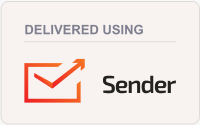Article by Ron Miksha
The Alberta Native Bee Council was invited to present talks to two seniors’ homes in Calgary. It was a great experience for the presenter as well as the 65 people in the audiences.
We often think of school visits and children’s programs when it comes to sharing the wonders of bees—but after giving two presentations at senior citizen centres in Calgary, I’m reminded that curiosity never retires. At both venues, I spoke about wild bees and honey bees, highlighting the differences in their lifestyles and the critical roles they play in pollination. I brought along examples of bumble bee domiciles and solitary bee nests, and those simple props sparked a hive of interest.
The seniors were full of thoughtful questions—about bee decline, pesticide use, and what kinds of flowers they could plant to help. A number of them stayed long after the official presentations ended, eager to continue the conversation. It was heartwarming to see how deeply they cared.
In fact, engaging older adults may be an overlooked strategy in pollinator outreach. They vote, they write letters, and they know how to speak up for what matters. Their enthusiasm was genuine and contagious, and I left both sessions feeling hopeful.
Sometimes we underestimate who our best advocates might be. But as I discovered, the wisdom, concern, and energy of Calgary’s senior citizens are more than ready to be mobilized—one bee talk at a time.
